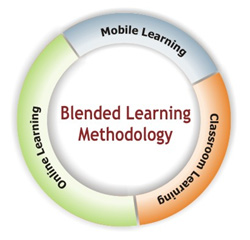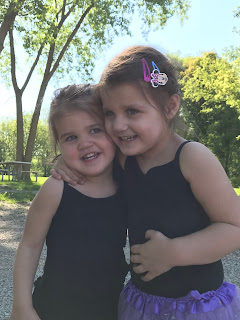 |
| Putting Out Fires |
The process to prepare for a school year changes every year, and this year is noticeably different as I am not coaching Speech Team. Instead of spending 100+ hours reading, cutting scripts, and editing, on top of a week of speech camp, I drifted a little more creatively and devoted the extra hours to my children. Not having the structure of speech allowed me to rest a bit more but has made me feel less prepared for the school year. So as the impending school year approaches, it is time to get motivated, focused, and organized for the school year.
 |
| Have you met my center child? |
Having children has taught me that the unexpected will most certainly happen. This past Friday, my husband and I showed up to the Brookfield Zoo with NO strollers or wagons. Our children are nearly 4, nearly 3, and 10 months. Initially, we thought this choice would be a disaster, but we were able to maneuver our way through the park in ways that we never had and see more sights than ever before. Talk about a lesson in flexibility! Building flexibility into my lesson plans will allow me to extend lessons, create and reteach concepts, and adapt my teaching to meet the needs of the students sitting in my classroom this year. For many years, I had lesson plans detailed to the minute for the entire semester as I entered the classroom (mostly the years that I started school 8+ months pregnant). While there is a benefit to being overly prepared and having a break-in-case-of-emergency lesson plan kit at the ready, there is something freeing about allowing for flexibility. Instead of rewriting the details of every plan, I can make sweeping changes to a much vaguer outline to reflect my students' strengths and areas in which they need support. I stress that there is still an outline that focuses on skills, unit objectives, and significant summatives planned, but there is flexibility to make adjustments as needed.
Set meaningful goals.
After creating a general outline, reflecting on objectives and standards, and considering major assignments, setting goals is critical. What do I hope for my students when they leave my class? How do I want my students to feel while in my class? How will I motivate even the most unmotivated student? These are all questions that fill my mind as the moments before school slip away. The popular Harvard Business study that addresses the number of people who write down their goals and their success, as a result, is a critical reminder that writing out goals is critical. Revisiting those goals throughout the year, keeping track of data (qualitative and quantitative), and keeping them at the forefront of planning and preparation throughout the year can make a classroom a more positive place to be. This year as I am asked to write my goals, I want to continue to consider social and emotional learning, empathy, engagement, and motivation in addition to the traditional C- or better grade or a grammar goal.
How will I measure these less measurable factors? Surveying and journaling can help shed insight into students' thought process. When my students leave my classroom, I want them to feel confident to share their voices and pursue their passions. When they enter my classroom on a regular school day, I want them to be motivated to give their best. To foster these feelings, I hope to continue to find ways to make learning relevant, to craft lessons that build skills that will help students in a variety of capacities and to promote empathy. In the book, Speak to Influence: How to Unlock the Hidden Power of Your Voice, author Susan Berkley addresses the importance of empathy in communication. Learning to listen to others and think about "what's in it for [the students]" can make the communicative interactions in the classroom stronger and help content reach students in more effective and efficient ways.
Establish purpose.
One of the most important aspects of any speech is the central purpose - the idea that all other thoughts stem from and the overall message that a speaker wants his or her audience to take from the speaker. In the book Speaker, Leader, Champion: Succeed at Work Through the Power of Public Speaking, by Jeremy Donovan and Ryan Avery, the idea of purpose is addressed very early in the tips and suggestions chapter. When we approach any speaking situation, lesson, or even a school year with an established purpose and message, that message subverts itself in all things. If the purpose is to teach students to develop empathy, those ideas can come across in a personal narrative assignment or when teaching a novel like Catcher in the Rye. In addition to teaching students to read, write, and communicate, we can teach them to cultivate skills that allow them to understand greater concepts and ideas; we can teach them to find passion and meaning. This year, as social and emotional learning continues to be a critical issue in our society, I hope to infuse empathy, kindness, mindfulness, and even a little grit into the messages I share with my students.
Check out what's new with technology.
Technology is a powerful tool that when implemented effectively opens doors and empowers students. Each year, technology tools - especially our cell phones - become more pervasive in our society. Communication devices are ubiquitous, but they can also lead to significant distractions and take away from powerful learning opportunities. Striking the balance, supporting my colleagues, and teaching students proper etiquette are significant challenges but need to happen. When we look around the room during a meeting, adults are swiping, scrolling, and tapping. Parents at the park are guilty of this, too. We are all entrapped by our devices - so to simply take them away is not the right move to solve the scrolling epidemic. This year, one of my goals is to continue to understand the balance, model effective technology use for my students, and challenge them to find ways to utilize the platforms they have been given to showcase their talents, spread their messages, and utilize the power of their words through appropriate technology use.
In addition, this summer I have spent a significant amount of time examining new platforms and tools that I hope to share with colleagues that will help increase effectiveness, engagement, and efficiency in the classroom. Some of my favorite tech tools this year include PearDeck, EdPuzzle, and the LMS Canvas. It should be a fun year to learn how to implement new tools and new features. I am also stoked about the updates in Google Classroom. Thanks, Google for continuously responding to the needs of teachers and for making user-friendly applications for all levels of tech proficiency!
Embrace the changes.
As I step into a new role of instructional technology coach and prepare for a year that will look very different from years prior, I am reminded that change causes dissonance. While I am still teaching three classes, the better part of my afternoons will be devoted to supporting my colleagues, tackling new initiatives, and creating PD. Still, there is a lot of unknowns and the job path is being forged as the school year progresses. Not having a clear answer of what to expect, creates a little uneasiness, but in that unease, there is also excitement. The unknown creates a sense of anxiety, but with that apprehension comes an opportunity to learn more and grow in unexpected ways. I always face the first day of school with mild apprehension, but I am excited to explore what can be learned from the new and yet to be discovered adventures ahead.
 |
| All the Feelings |











